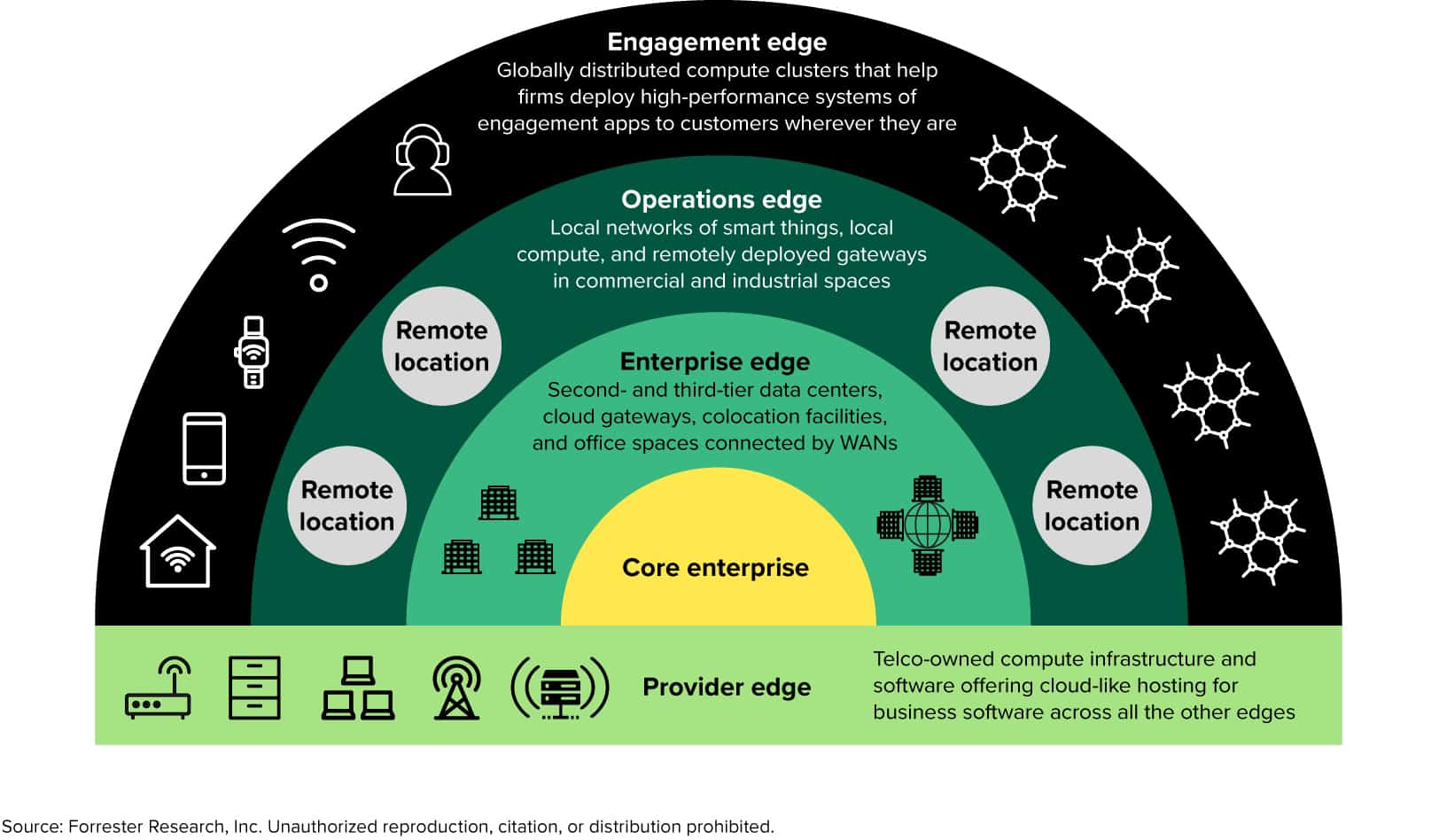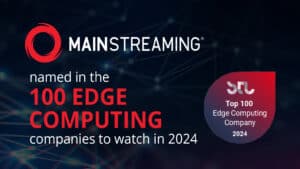The Discipline of Edge Computing

Figure 1: Forrester’s Edge Computing domains (Forrester’s report “Product Security At The Four Edges”, September 2023)
How Media is Moving to the Edge
Video streaming began as file downloads from a central video storage location to be played from a local device-based file storage system. This was called Video On Demand (VOD). As consumption grew, the delivery infrastructure evolved to create more local caches that could store files closer to consumers and stream them rather than download them. This minimized the total network bandwidth required as well as the time to wait for video files to be delivered and start playing. But video “streaming” was still about delivering files.
After evolving to support live video streaming over the internet, and then to support rich media services with video at their core, we are now at a point where many media delivery functions can be performed in Edge computing domains. Examples of functions deployed today by MainStreaming include content watermarking, origin shielding, content repackaging, and file transcoding.
But Edge computing in Media is not just about media delivery. It is about delivering the whole Media Service. Therefore, we are now enabling the functions of Media Platform Access Services to run at the Edge instead of in the Cloud or on the Device. These functions include features of the core Media Service such as recommendation services, user interface rendering, artificial intelligence inference offloading, and advertizing insertion.
Leading Streaming Providers are now looking closely at the potential benefits of Edge Computing. Reasons for moving to the Edge include:
- To improve the quality of new App releases through more realistic, scalable testing that is more representative of the real-world system load from consumers.
- To increase resilience of the many tens of Media Service functions that are currently running in centralized Cloud environments.
- To improve performance of the Media Service by reducing the latency between the consumer and where the Media Service function is running (e.g., advertizing insertion).
As we observe the growth of streaming delivery capacity in Edge Networks to support larger streaming audiences, we are simultaneously observing a growth of computing capacity in these Edge Networks. This computing capacity can be, and should be, leveraged to provide the new efficiencies and greater resilience required by today’s Media Services.
The adoption of Cloud and the Big New Migration to the Edge
Cloud adoption by Enterprise IT and large Media businesses has been progressing for over a decade. In today’s Media industry many content processes are running on cloud infrastructure and cloud services, including production, post-production, compliance, acquisition, business-to-business (B2B) content distribution, and direct-to-consumer (D2C) streaming. But we are now seeing the start of the big migration of many of these processes into Edge computing domains. The Edge began as a data delivery environment but is becoming the new Cloud, adding computing to the Edge’s already-existing delivery capabilities.
The move to the Edge in the Media industry involves a migration of software and services that drive the Media Services we use. In the never-ending quest to make services faster, better, and cheaper there is a natural assessment of how to leverage the growing capacity of Edge computing platforms, that are expanding in Media primarily to support more streaming video delivery. The Cloud gave us a new “elastic infrastructure” that replaced fixed server infrastructure. The Edge instead gives us a hyper-distributed elastic infrastructure that is even closer to the consumer and can be used for making workloads more efficient and cost-effective. To use this infrastructure requires a step forward in software development practices that leverage this hyper-distributed serverless state.
In the Media industry, leveraging new Edge architectures is supported by new business models. These use compute capacity at the Edge during off-peak times and bundle media processing into Media Delivery deals. To elaborate, the increasing demand for Media Delivery requires the expansion of streaming delivery system capacity, which includes more memory, compute, and storage resources. At the same time, compute consumption for VOD file preparation remains relatively consistent according to the number of unique videos produced, published, and delivered.
The over-supply of compute capacity due to streaming capacity expansion growth creates an opportunity to better utilize the distributed compute capacity at the Edge for the delivery of Media Services.
Read the full article below:





